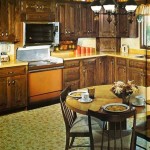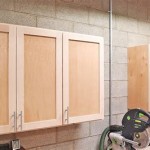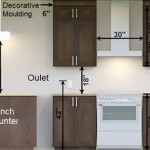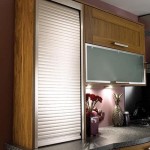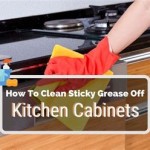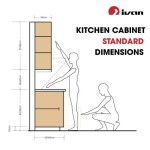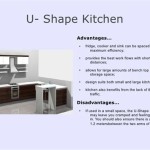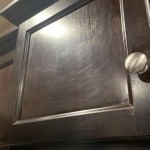What Is The Best Laminate For Kitchen Cabinets?
Selecting the ideal laminate for kitchen cabinets is a significant decision that impacts both the aesthetic appeal and functional longevity of the kitchen. Laminate, a composite material, offers a cost-effective and versatile alternative to solid wood or other more expensive cabinet finishes. Its resilience, ease of maintenance, and wide array of design options make it a popular choice for homeowners and designers alike. However, navigating the various types and qualities of laminate can be challenging. This article will explore the key factors that contribute to determining the best laminate for kitchen cabinets, outlining essential considerations related to durability, aesthetics, and application.
The term "laminate" encompasses a broad range of materials, each with distinct properties and suitability for different applications. Generally, laminate consists of multiple layers bonded together under high pressure and heat. These layers typically include a decorative surface layer, a core layer (often composed of particleboard or MDF), and a backing layer. The quality of each layer and the bonding process significantly influence the overall performance and longevity of the finished product. In the context of kitchen cabinets, the laminate serves as the exterior surface, providing both visual appeal and protection against daily wear and tear.
Understanding Different Types of Laminate
Several types of laminate are commonly used for kitchen cabinets, each with its own set of advantages and disadvantages. High-Pressure Laminate (HPL) is considered one of the most durable options. It is created by pressing multiple layers of kraft paper saturated with phenolic resin, topped with a decorative layer, under high pressure and temperature. This process results in a very dense and impact-resistant material. HPL is well-suited for high-traffic areas and is resistant to scratches, stains, and heat. However, it can be more expensive than other types of laminate.
Low-Pressure Laminate (LPL), also known as melamine-faced chipboard (MFC), is another popular choice. It is produced by directly bonding a decorative paper layer saturated with melamine resin onto a core of particleboard or MDF. LPL is less expensive than HPL and offers a wide range of colors and patterns. However, it is generally less durable and more susceptible to scratches and moisture damage. While LPL is suitable for many kitchen applications, it may not be the best choice for areas that experience heavy use or are frequently exposed to water.
Another type of laminate that is gaining traction is Thermally Fused Laminate (TFL). TFL is similar to LPL in that a decorative paper layer is fused directly onto a core material under heat and pressure. The key difference lies in the bonding process, which creates a stronger and more durable bond compared to traditional LPL. TFL offers a good balance of durability and affordability, making it a suitable option for kitchen cabinets. It is available in a variety of textures and finishes, providing a wider range of design possibilities.
Edgebanding is a crucial aspect of laminate kitchen cabinets. It refers to the material used to cover the exposed edges of the laminate panels. Edgebanding protects the core material from moisture and impact damage, while also enhancing the overall aesthetic appearance. Common edgebanding materials include PVC, ABS, and wood veneer. The choice of edgebanding material should be based on the type of laminate used and the desired level of durability and aesthetic appeal. High-quality edgebanding is essential for ensuring a seamless and long-lasting finish.
Key Considerations for Durability and Performance
Durability is paramount when selecting laminate for kitchen cabinets. The kitchen is a high-use area, and cabinets are subject to frequent wear and tear. Scratches, stains, and moisture damage are common concerns. Therefore, it is crucial to choose a laminate that can withstand these challenges. HPL is generally considered the most durable option due to its high density and resistance to impact and abrasion. However, TFL also offers a good level of durability and is a more affordable alternative.
Moisture resistance is another critical factor to consider. Kitchens are prone to spills and humidity, which can damage laminate cabinets if they are not properly protected. Laminate with a sealed surface and waterproof edgebanding is essential for preventing moisture from penetrating the core material. Particleboard, a common core material, is particularly susceptible to water damage, causing it to swell and warp. MDF (Medium-Density Fiberboard) is a better option for moisture resistance, but it is still important to ensure that the edges are properly sealed.
The thickness of the laminate also plays a role in its durability. Thicker laminates are generally more resistant to impact and abrasion. For high-traffic areas, such as lower cabinets and drawer fronts, a thicker laminate may be preferable. The core material also contributes to the overall structural integrity of the cabinet. A dense and stable core material, such as MDF, provides better support and prevents the cabinet from warping or sagging over time.
Consider the long-term maintenance requirements of the laminate. While laminate is generally easy to clean, certain types may be more prone to staining or discoloration. A laminate with a smooth, non-porous surface is easier to wipe clean and less likely to absorb spills. Avoid abrasive cleaners, which can scratch or dull the surface of the laminate. Regularly cleaning the cabinets with a mild soap and water solution will help to maintain their appearance and prevent the buildup of grime.
Aesthetic Factors and Design Options
Aesthetic appeal is a significant consideration when choosing laminate for kitchen cabinets. Laminate offers a vast array of colors, patterns, and textures, allowing for a wide range of design possibilities. From realistic wood grain finishes to solid colors and abstract patterns, there is a laminate to suit every style and preference.
Wood grain laminates are a popular choice for creating a warm and inviting kitchen atmosphere. Advancements in printing technology have made it possible to replicate the look and feel of natural wood with remarkable accuracy. Embossed textures further enhance the realism of these laminates, adding depth and dimension to the cabinet surfaces. When selecting a wood grain laminate, consider the species of wood, the grain pattern, and the color tone to ensure it complements the overall kitchen design.
Solid color laminates offer a sleek and contemporary look. They are available in a wide range of hues, from classic neutrals to bold and vibrant colors. Solid color laminates can be used to create a monochromatic kitchen scheme or to add pops of color to a more neutral design. Matte finishes are a popular choice for solid color laminates, as they minimize reflections and create a softer, more understated look.
Texture plays an important role in the overall aesthetic appeal of laminate cabinets. In addition to embossed wood grain textures, laminates are available in a variety of other textures, such as stone, metal, and fabric. These textures can add visual interest and tactile appeal to the cabinets, creating a more dynamic and engaging design. Textured laminates can also help to conceal fingerprints and smudges, making them a practical choice for busy kitchens.
Consider the overall style and design of the kitchen when selecting the laminate. If the kitchen has a traditional style, a wood grain laminate with a classic door style may be a good choice. For a more contemporary kitchen, a solid color laminate with a sleek, minimalist door style may be more appropriate. The choice of laminate should complement the other elements of the kitchen, such as the countertops, flooring, and appliances.
The finish of the laminate can also affect its aesthetic appeal. Matte finishes are generally more understated and create a softer, more natural look. Glossy finishes are more reflective and can add a touch of glamour to the kitchen. However, glossy finishes are also more prone to showing fingerprints and smudges, so they may require more frequent cleaning. Consider the level of maintenance required when selecting the finish of the laminate.
Installation and Maintenance Considerations
Proper installation is crucial for ensuring the longevity and performance of laminate kitchen cabinets. Laminate cabinets are typically assembled from pre-cut panels, which are then joined together using screws, dowels, or other fasteners. It is important to ensure that the panels are properly aligned and that the joints are tight and secure.
The installation process typically involves attaching the cabinets to the walls and floor, ensuring that they are level and plumb. Shims may be used to level the cabinets if the floor or walls are uneven. Once the cabinets are installed, the doors and drawers are attached, and the hardware is installed.
Professional installation is recommended for best results. Experienced installers have the tools and expertise to ensure that the cabinets are installed correctly and that the finished product is of high quality. However, DIY installation is possible for experienced homeowners with the necessary skills and tools.
Regular maintenance is essential for keeping laminate kitchen cabinets looking their best. Clean the cabinets regularly with a mild soap and water solution. Avoid abrasive cleaners, which can scratch or dull the surface of the laminate. Wipe up spills immediately to prevent staining. Use a soft cloth or sponge to clean the cabinets, and avoid using excessive amounts of water.
For stubborn stains, try using a non-abrasive cleaner specifically designed for laminate surfaces. Always test the cleaner in an inconspicuous area first to ensure that it does not damage the laminate. Avoid using harsh chemicals or solvents, which can discolor or damage the laminate.
Protect the cabinets from excessive heat and moisture. Avoid placing hot pots and pans directly on the laminate surface. Use trivets or cutting boards to protect the laminate from heat and scratches. Ensure that the kitchen is well-ventilated to prevent the buildup of moisture. Promptly repair any leaks or water damage to prevent further damage to the cabinets.

Best Laminates For Kitchen Cabinets Blog By Newmika

10 Best Kitchen Laminate Design Trends You Must Follow

Which Laminate Is Best For Kitchen Cabinets

Which Is The Best Laminate Kitchen Or Acrylic

Choosing The Best Kitchen Cabinet Finish Acrylic Or Laminates Jennings

Lamination Nation Why Laminates Are The Best Choice For Kitchen Makeover

Laminate Vs Melamine Cabinets Which Is Best For Kitchen

Options For The Best Kitchen Flooring Lx Hausys

Acrylic Vs Laminate Choosing The Best Finish For Your Kitchen

Best Laminate For Cupboards Durable And Stylish
Related Posts

